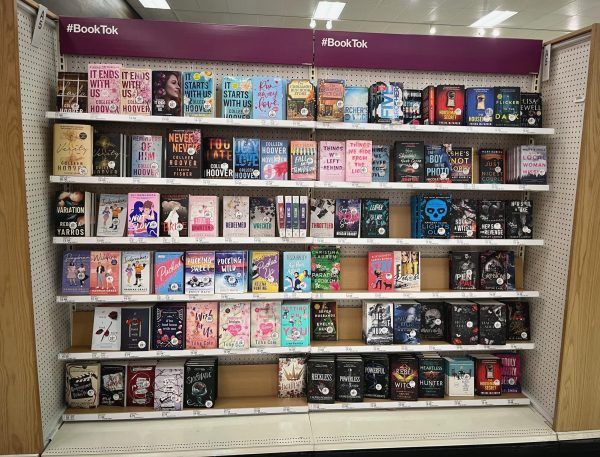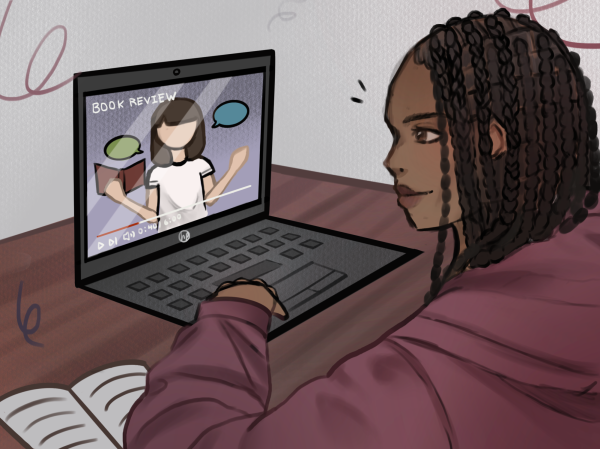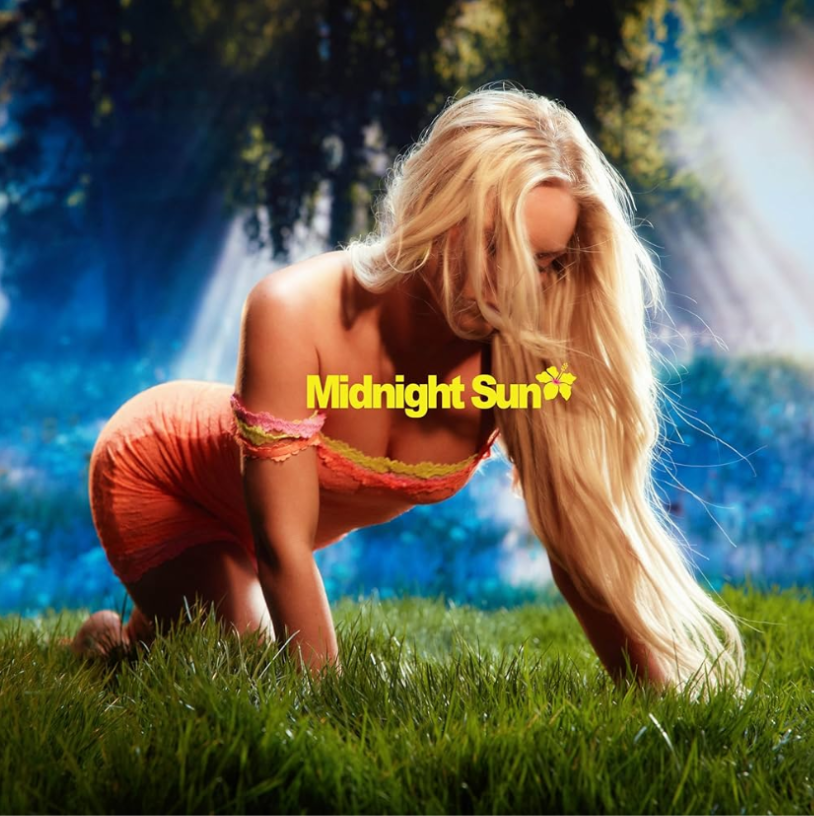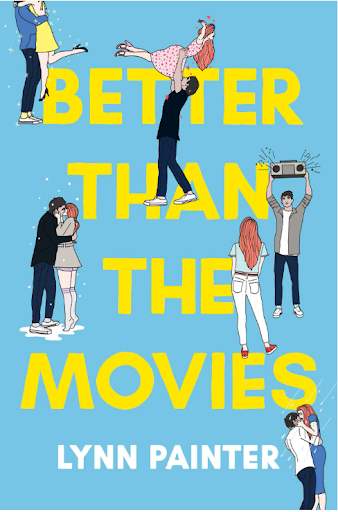Booktok, according to Exploding Topics, is a TikTok subcommunity with 135,000 searches, which has become a key player in influencing bestseller lists and reading trends. However, as news of the January TikTok ban intensified and concern lingers, readers look to other platforms for book reviews and recommendations.
“I think TikTok has had an impact on book industries and readers in general,” librarian Kristen Schoenberger said. “I’ve started seeing BookTok sections at Barnes and Noble and I always overhear students talking about books they’ve found on BookTok, which we’ll sometimes refer to when ordering new books for the library.”

(Nandini Sattineni)
GoodReads
Another key player in book content social media is GoodReads. Unlike platforms like BookTok which focuses on short-form visual content, according to research by Ryan Raffaeli and Ryann Noe, GoodReads provides a platform for readers to log their books, write reviews and participate in discussions. Users can create virtual bookshelves to track what they’ve already read, what they’re currently reading and what they want to read in the future. There’s also a feature to rate books from one to five stars, and they can write reviews to inform other readers about their reading experiences. Many users participate in discussions by joining reading groups and following authors to gain information on new releases.
“The main way I find books to read would be through GoodReads,” junior Chelsea Lewis said. “I follow many people on that platform, so I’ll see their specific recommendations and reviews to find quality books.”
BookTube

An alternative platform to discover new books would be BookTube, a self-identified subsection of YouTube. According to research by Melina Hughes at Portland State University, BookTubers create primarily book-content videos, focused on young adult book titles, offering reviews, book hauls and reading challenges. The platform has grown in popularity among younger audiences, creating an interactive community where readers engage with creators through discussions, live streams and recommendations.
“Whenever I watch a YouTuber talk about a book, I feel like I have to buy it right then and there,” sophomore Eurie Kim said. “It’s like getting free recommendations and summaries from a friend, and there are links to buy the books as well.”
According to a study by Anita Dubroc at Louisiana State University, the BookTube community serves diverse genres and audiences, making literature more accessible and engaging for many readers. A study published in Multimodal Technologies and Interaction indicates that BookTubers have become influential in promoting reading habits, mainly among younger audiences, by creating interactive discussions and engaging content about books.
“I regularly use YouTube for book recommendations,” Lewis said. “I mainly watch videos where creators talk about their favorite books of the year, so I’ll refer to those.”
Bookstagram
Similarly to BookTube, according to a study of Bookstagram by Bronagh Flanagan, Bookstagram has significantly contributed to the modern way people interact with books through aesthetic presentations of literature and engagement. Ninety-three percent of Bookstagrammers engage with books through images and captions, differentiating them from other book review blogs.
“We have our CHS library Instagram account, which we use to draw attention to new arrivals,” Schoneberger said. “I think this helps because we get input on what students think of our selection of books.”
Bookstagram has reached millions of readers through the “#bookstagram” hashtag being used over 180 million times. According to the DIVA portal, the main drive of Bookstagram’s popularity would be the visual content and authenticity, instead of focusing on long reviews, posts also highlight personalized experiences with books which allows followers to relate on an emotional level. The combination of aesthetic content, personal engagement and visual storytelling has made Bookstagram a player in shaping modern book culture.
“I like Bookstagram because I feel like it’s less about trends and more about personal connections towards books,” Kim said. “I think even without BookTok, people will find different platforms to turn to, and it’s an opportunity to create new reader communities.”









